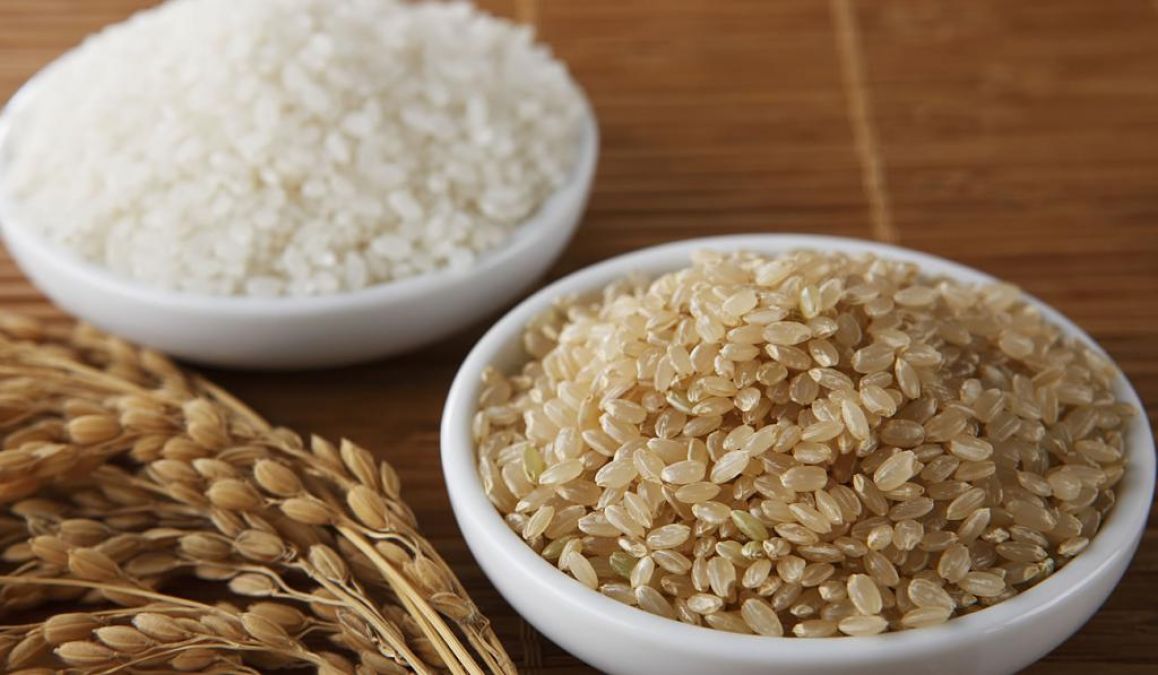
Rice is one of the most popular cereals in the world, which is used by professionals in preparing countless dishes for their excellent appearance and neutral taste. In the East, rice grains are the basis of national cuisines.
Rice is sold in two varieties: white (polished) and brown (unpeeled) rice. It is believed that brown rice is more useful due to minerals and trace elements that are contained in the shell. But scientists have proven that white rice is not worse, and the exaltation of brown is just a marketing ploy of producers. The choice is yours: what to believe, and what - no!
Whatever rice you choose, you will get food that is good for digestion. Rice is rich in vitamins of group B - thiamine (B1), riboflavin (B2), niacin (B3) and B6. Vitamins of this group are necessary for the normal functioning of the nervous system, as well as for the conversion of food nutrients into energy. Also, rice cereals contain carotene, vitamins E and PP, a sufficient amount of minerals: phosphorus, potassium, calcium, iodine, iron, zinc and selenium.
also read: 9 harmful combinations: what foods cannot be used together?
Rice grass consists of complex carbohydrates (78%), proteins (7-8%) and fiber (3-4%). Complex carbohydrates are useful in that they are able to accumulate in muscle tissue and, if necessary, provide the body with an inexhaustible flow of energy. They also reduce fats and sugars without losing energy.
As for proteins in rice cereals, they are represented by several essential amino acids involved in the processes of the birth of new cells. Unlike other cereals, rice grains do not contain gluten, a protein that is often a food allergen.
An important useful property of rice is that it contains almost no salt, so it is recommended for people who are trying to lose weight. It does not excite gastric secretion but contains a lot of ballast substances that stimulate digestion. The lack of salts and a high content of potassium (potassium neutralizes the effects of salts coming from other foods) make rice an excellent food product for the prevention of cardiovascular diseases.
How to choose a rice variety
Choosing rice, we must first know about what dish we buy it. Between the shape of the grains and culinary properties, there is a clear relationship: the shorter and whiter the grains, the more water they absorb and the more sticky and soft and more swell. Long grains, respectively, are more transparent and harder, absorb less water and increase mainly in length.
It should also be borne in mind that one variety of rice, but processed by different technologies, has an unequal composition, culinary properties, and taste.
Brown (unpolished) rice
This species is considered the most useful for the body, which is very logical. Such rice is highly valued by supporters of healthy eating. The main thing is not to make a mistake with the manufacturer. It is minimally processed rice, without an outer casing and husk.
Long grain rice
Grains have a length of 6-8 mm, they absorb little water, so in a dish, it is always crumbly and rice cakes do not stick together. Long grain rice is suitable for cooking side dishes for meat and fish dishes, pilau, as an additive in salads and toppings in cakes. This is the most versatile type of rice.
Medium Rice
Grains of this variety has a more rounded shape and are shorter (5-6 mm) in length than the long grain. This kind of grain absorbs more water, contains more starch and the welding becomes soft. This type of rice is appreciated by cooks for their ability to absorb the tastes and aromas of other ingredients of the dish.
It is used to make soups, salads, risotto, and paella.
Round rice
It has a rounded shape and a length of 4-5 mm. It contains the most starches and therefore absorbs a lot of water. It is used for many dishes, the quality of which depends on the skill of the chef to cook this particular type of rice. Great for cooking casseroles, desserts, puddings, cereals, and sushi.
When choosing a variety, also look at the humidity. The rice should be dry while shaking the bag, the pictures should slide easily and not stick to each other. Brown furrows do not speak about the poor quality, but only about insufficient polishing. Such rice is more often tastier than the absolutely white.
If you observe a lot of grain fragments and not whole grains, then these fragments will boil out faster than whole grains and the rice in the dish will look heterogeneous. This rice is more suitable for soups and casseroles.
If the rice is opaque and white, then this suggests that it is immature and in taste is inferior to ripen. Light brown grains among whites say that rice was stored at high humidity and there may be various fungi in it.
And the last thing I would like to remind you about. Do not buy rice cereal in an opaque package - you never know what's inside until you unpack it!
How to store rice
Rice are stored in a dry room, in a glass or ceramic dish. Inside you can put a pair of garlic cloves, so as not to attract the food moth to the product.
also read: Homemade Lush Pizza for kids